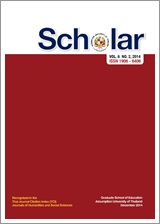Factor Structure of the Fear Survey Schedule for Children-Revised (FSSC-R): Identification of and Comparison of Fear Dimensions Between Singaporean, Australian, and American Children
Keywords:
Normal Fear, Common Fears, Children, Fear Survey Schedule for Children-Revised (FSSC-R)Abstract
This present study employed the Fear Survey Schedule for Children-Revised questionnaire to investigate the common normal fears experienced by Singaporean children, as well as to compare these fears with those identified for Australian and American children. This quantitative research employed frequency analysis to identify the top ten common fears reported, and factor analysis to identify fear dimensions that best represent the participants’ fear responses. A total of 1,234 Singaporean children aged 7 to 12 years participated in this study. The study’s findings revealed that the top common fears reported by Singaporean children relate to fears concerning death and danger. Factor analysis yielded a 10 factor structure that relates primarily to the fears of danger and death, and fears related to negative social consequences. Compared to children in Australia and the U.S., the findings from this study suggest higher fear sensitivity among Singaporean children towards ordinary day-to-day events. Findings from this study reinforce the need to consider the unique cultural and environment factors that can influence fears in children other than typical developmental fears that children experience.Downloads
How to Cite
Issue
Section
License
The submitting author warrants that the submission is original and that she/he is the author of the submission together with the named co-authors; to the extend the submission incorporates text passages, figures, data, or other material from the work of others, the submitting author has obtained any necessary permission.
Articles in this journal are published under the Creative Commons Attribution License (CC-BY What does this mean?). This is to get more legal certainty about what readers can do with published articles, and thus a wider dissemination and archiving, which in turn makes publishing with this journal more valuable for you, the authors.




